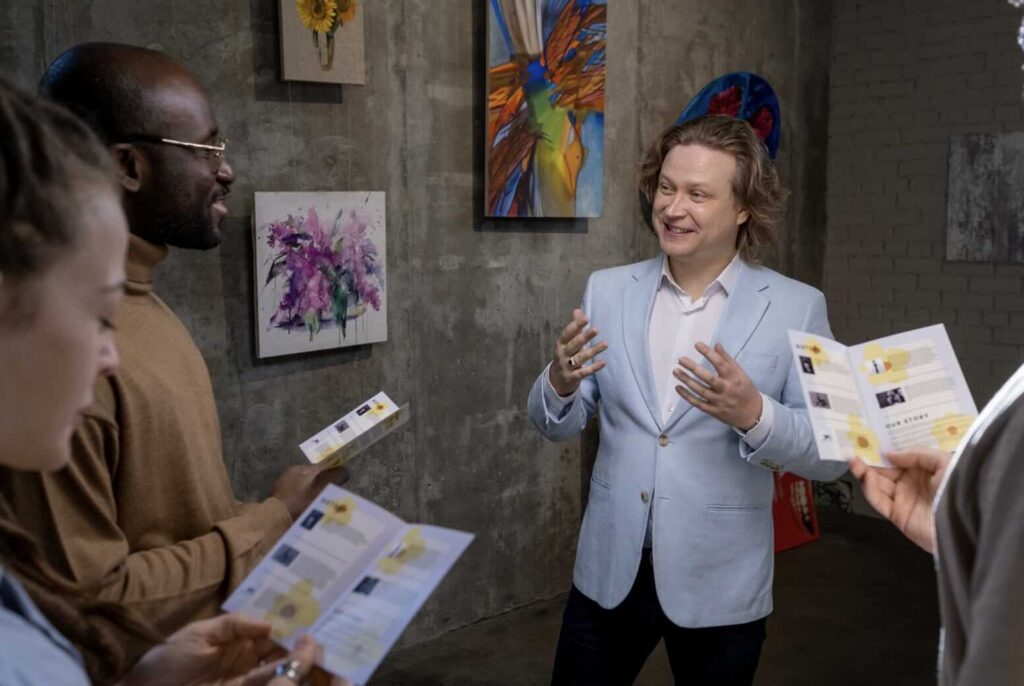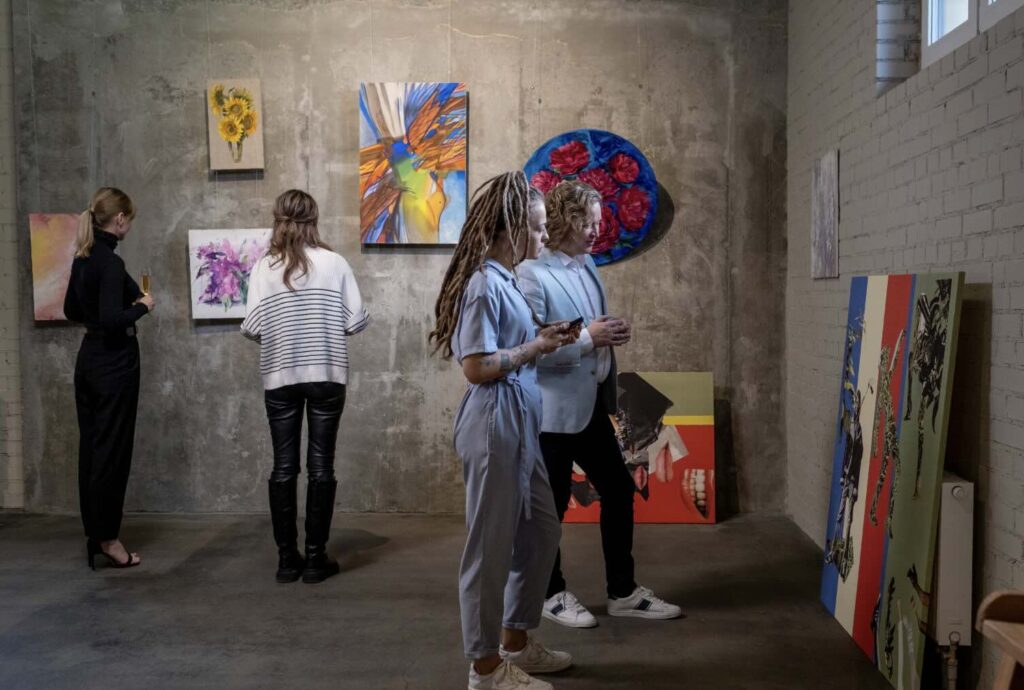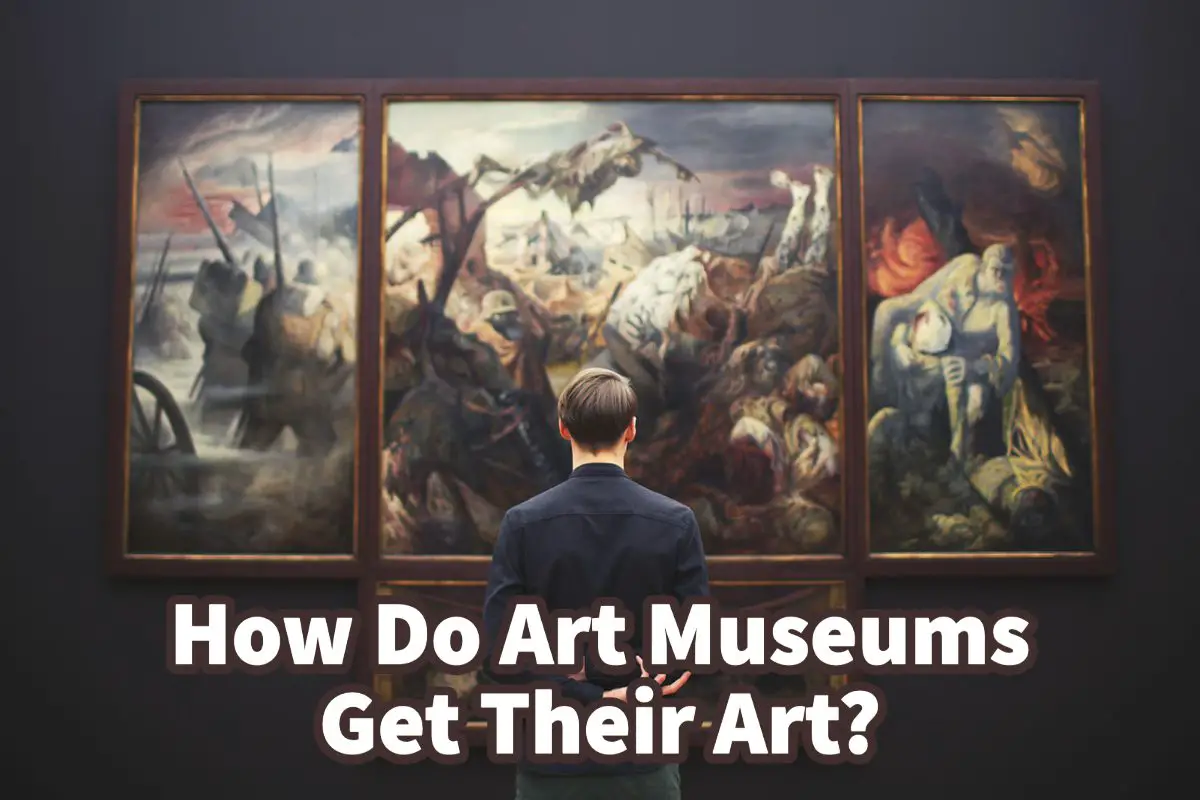You may be amazed to see all these beautiful paintings and artwork when you go into an art museum. If you are like me, you may wonder how they can obtain all their art.
Museums obtain their works of art through a gift, bequest, loan, or artwork purchase. Museums need to acquire artwork through planning and following usually strict processes they have put in place. Whatever they receive, through even a gift, bequest, loan, or purchase, it has to make sense for the overall Museum’s collection.
Table of Contents
- “Behind the Grand Display: How Art Museums Acquire Their Treasures” – 4 Ways
- “Guardians of Culture: The Indispensable Role of Art Museums”
- Frequently Asked Questions
- Related Questions
“Behind the Grand Display: How Art Museums Acquire Their Treasures” – 4 Ways
The hushed corridors of art museums are lined with masterpieces that tell tales of bygone eras, distant lands, and the evolution of human creativity. But have you ever paused to wonder how these artworks find their way to the walls and spaces of these institutions?
Below are the four basic ways that a museum will acquire artwork to show in its collections:
Museums Get Art As A Gift
One of the ways that museums get art is they acquire art as a gift. A gift means that someone such as an art collector has some art pieces that they decide to give to the Museum for their collection,
The advantage of the art museum is that they do not need to purchase the art. Essentially, they are receiving the art, usually free of charge.
From any of the art collectors or patrons, this is also a good thing for them. They can give it to the Museum, and when they give it to the Museum, there should not be any tax liabilities.
Before you donate to a museum, you must ensure that the Museum is the right fit for your artwork. It also needs to be able to fit in with the Museum’s current collecting policy. Museums usually have a policy in place of what artwork they will accept and how they will accept it.

Here are some things to consider when giving art to a museum:
- Suitable for the museum – The art piece should be suitable for the museum and fit into the present collection. For example, if you have a piece of modern art, you may want to look for a museum specializing in modern or contemporary art.
- Good Physical Condition – Most museums want to be sure that your art is in good physical condition.
- Renowned Artist – Art museums like renowned artists.. This doesn’t mean it has to be one of the top or most famous artists, but if you have a piece of art from someone well-known in your community, you may find a local museum that wants to accept that artwork for their collection.
- Be prepared – When you contact the museum, you should be ready to supply a photograph and other details of the work so they can arrange for a curator to review the work in person.
The Museum may tell you that your art is not a good fit; you may want to ask them if they know of any resources or museums they would recommend that you contact. Some art foundations are set up to help people donate works of art and get them into suitable museums.
The Museum may know about any of the art foundations in your area that may help you donate your artwork.
The main reason people give works of art to the Museum is goodwill; they want to be sure that others can enjoy the skill or they may want to be sure the Museum will protect the art and place the art in a proper location.
One of the most important and immediate ways to benefit a museum collection is to donate your art during your lifetime and give it to the Museum without any strings attached. By doing this, you will see the goodwill of how your art benefits the public.
Musuem’s Get Art As A Bequest
Another way that museums get art is through a bequest. A bequest is a property given through a will; a person will put into their will the request that specific works of art be bequeathed or given to a particular museum.
Even if you bequeath your artwork to a museum, you still need to go through the same steps as you would if you gave the art to them. You would need to know that it fits into the Museum’s collection and would be something the Museum wants.
The critical point is that most museums have specific things they want to show and certain things they may not.
That is because the Museum needs the entire collection to fit together. Just because you have a piece of art you want to bequest to the Museum, it does not mean the Museum will accept it. In short, for the Museum to receive a piece of art, it must make sense for its comprehensive collection.
Museum May Loan An Artwork
Another way that a museum may obtain artwork is to show it through a loan program. They can loan the art from an individual, a collector, or even a museum. The advantage of this is that they can often receive some high-quality works of art without purchasing them and permanently displaying them in the Museum.
It also allows the Museum to display some fantastic works of art to a community that would usually not have the chance to see them. Many years ago, I went to an exhibition at the Brigham Young University Art Museum. The Museum had brought in some of the work of the famous Danish artist of the Christus statue named Bertel Thorvaldsen.
I know the artwork they were showing was on loan from a museum in Denmark; the special exhibition generated a lot of interest within the community. I remember waiting in line to get in and being amazed at the number of people attending the exhibition.
You often see museums with works of art on loan from another museum, a collector, or an individual. It allows the Museum to help generate interest that usually they would not develop in any other way.
Of course, if you were looking to loan a piece of art to a museum, you would need to examine the legal documents involved with the loan carefully. You want to ensure nothing in the papers could be an issue or problem.

Museums Purchase Works of Art
Sometimes the Museum will purchase a work of art. For works of art to be purchased, it has to make sense for the art museum. There is an entire process that they will need to follow to decide what works of art the museums will purchase.
Purchasing works of art can be highly costly for a museum. Most museums need to be very frugal and thoughtful about which works of art they will buy.
To discover more about how a museum purchases works of art or the process they may go through, you can read our blog about How Do Museums Buy Art From Private Collectors? by clicking this link.
These are the four main methods a museum will use to obtain art to exhibit in their art museum. All of these methods have one thing in common – whether a museum receives the artwork as a gift, bequest, loan, or purchase – the artwork would need to make sense for the Museum’s collection.
“Guardians of Culture: The Indispensable Role of Art Museums”
With their grand façades and hallowed halls, art museums stand as more than just buildings. They are the guardians of human expression, tracing our journey across time and civilizations. These institutions serve as a bridge between the past, present, and future and play an essential role in society.
Here are 12 compelling reasons that emphasize the importance and indispensability of art museums:
- Preservation of History: Museums conserve and protect countless artworks, ensuring future generations can witness and learn from the masterpieces of yesteryears.
- Cultural Education: They offer an unparalleled cultural education, providing insights into diverse societies, histories, values, and beliefs.
- Fostering Creativity: By showcasing artistic innovations across eras, museums inspire visitors to think creatively and appreciate the boundless limits of human imagination.
- Economic Impact: Museums contribute significantly to local and national economies, attracting tourists, generating jobs, and supporting ancillary industries.
- Community Building: They serve as community hubs, hosting events, workshops, and educational programs, fostering unity and a sense of shared heritage.
- Safe Spaces for Dialogue: Museums provide environments where complex topics, whether historical, political, or societal, can be explored and discussed.
- Showcasing Diversity: Through diverse collections, museums promote global understanding, celebrating the vast array of human experiences and artistic expressions.
- Mental Well-being: The contemplative environment of a museum offers a mental respite. Many find solace, reflection, and a deeper connection to art, aiding in mental well-being.
- Supporting Artists: Contemporary art museums play a crucial role in recognizing, supporting, and promoting current artists, fostering the art ecosystem.
- Architectural Marvels: Many museums are architectural gems, representing innovative designs and engineering feats and becoming integral parts of a city’s skyline.
- Technological Integration: Modern museums seamlessly integrate technology, offering augmented and virtual reality experiences, making art more interactive and accessible.
- Bridging the Past and Future: While museums preserve the relics of the past, they also embrace the future, continually evolving in response to societal changes and ensuring art remains relevant and relatable.

Art museums, in essence, are the beating heart of human cultural achievement. They remind us of where we’ve been, ground us in our present, and inspire future visions. Every visit is a journey, an exploration of the human spirit and creativity, solidifying their importance in the tapestry of civilization.
I am very thankful for art museums. Art museums inspire me and help me to be a better artist. Anita Louise Art is dedicated to art education, great artists worldwide, and inspiring others to find and create their art. We look at all kinds of art that are made to uplift and inspire. #ArtToMakeYouSmile! #ArtToMakeYouHappy!
Anita Louise Art is dedicated to art education, great artists, and inspiring others to find and create their art. We love art that uplifts and inspires. #ArtToMakeYouSmile! #ArtToMakeYouHappy!
If you are interested in seeing any of my art, you can find out more by clicking here. If you are interested in what inspires me and my paintings, you can discover more by clicking here.
We have a free newsletter and would love you to be part of our community; you can subscribe to the newsletter by clicking here. If you have any questions, I would be happy to talk to you. You can reach me, Anita, by clicking here.
Subscribe to our Anita Louise Art YouTube Channel filled with great videos and information by clicking here.
Join us for our podcast “5 Minutes With Art.” Spend just 5 minutes a week with us to discover and learn about great art and artists. You can find out more about our podcast by clicking here.
Frequently Asked Questions
How do museums acquire new pieces of art?
Museums can acquire art through gifts, bequests, loans, or purchases. These processes often follow strict guidelines to ensure that each acquisition aligns with the museum’s mission and overall collection.
What is a bequest in the context of museums?
A bequest is a piece of art or other valuable item that has been donated to a museum in someone’s will. The museum will then take possession of the item after the donor’s death.
What is an art loan to a museum?
An art loan occurs when a piece of artwork is lent to a museum for a set period. It might be a private owner lending a piece from their collection, or another museum sharing a work for a special exhibition.
How does a museum decide to purchase a piece of art?
Museums consider several factors before purchasing art. They look at the quality and relevance of the piece, its alignment with the museum’s collection, its historical or cultural importance, and the museum’s budget.
Can anyone donate art to a museum?
While anyone can propose a donation, not all pieces are accepted. The artwork must meet the museum’s acquisition criteria and be a fit with its overall collection.
Can a museum sell artworks from its collection?
Yes, but this is usually a last resort. The process, known as deaccessioning, is controversial and often subject to strict rules to ensure it’s done ethically and in the best interests of the museum’s mission and the public.
Why would a museum borrow art instead of purchasing it?
Borrowing art allows a museum to display pieces they may not be able to afford or that they only want to exhibit temporarily. It can also allow them to host special exhibitions featuring works from other institutions or private collections.
Are there legal considerations when a museum acquires new artwork?
Yes, there can be many legal considerations, including issues of ownership, copyright, cultural heritage laws, and potential disputes over provenance, especially for older works or those from other cultures.
What role does a curator play in acquiring art for a museum?
A curator is often involved in deciding what pieces a museum should acquire. They research potential acquisitions, negotiate purchases, loans.
Related Questions
How Do Art Museums Choose What To Exhibit?
Art museums choose what they want to exhibit because of costs, budget restraints, and space restraints. They want to show art that the public wants to see and exhibitions the people are willing to pay an entrance fee to attend. A museum also exhibits those works of art that align with its mission and vision.
By clicking here, you can learn more by reading How Do Art Museums Choose What To Exhibit?
The Important Role Of Art Museums In The Art World
An art museum will help to collect and preserve works of art. They also interpret the art and help to educate us all about art. Many art museums will have programs that will allow you to even experiment with different types of art. The core role of an art museum is to inspire us about art.
You can discover more by reading The Important Role Of Art Museums In The Art World by clicking here.

